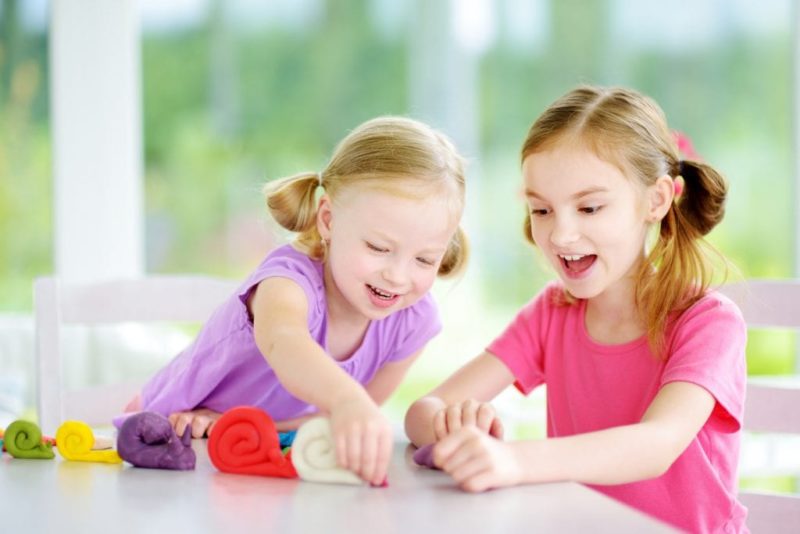Fun at-home craft can be great for developing your child’s fine motor skills as well as their creativity and imagination. Here, we’ve shared how you can expect your child’s craft skills to develop and some ideas to do together at home!
Craft is a great way for your child to explore their imagination and their interests while developing their fine motor skills. Help your child make different creations with a range of material, including crayons, pencils, paint, glitter, pom poms, crepe paper, feathers and more!
As your child grows, their interest and ability to draw and engage in craft will change:
Ages 2-3
From ages 2-3 years, they will still be exploring how to use of scissors, and learning how to snip paper. They will hold a crayon with their thumb and fingers, imitating circular, vertical and horizontal strokes. They will explore paint using their fingers or creating dots and lines with a big paint brush.
Ages 3-5
When your child is in preschool, ages 3-5, they will start to expand their use of material to make their creations, including, paint, crayons, clay, scissors, paper and glue! They will start to experiment with their use of textures, space and colours to create a chicken with feathers or a bright blue sky and sun in the garden. Your child will be able to create basic shapes and copy shapes, including a square and cross. Cutting skills will emerge, starting to cut along lines. They will state to create a basic figure of a person, maybe of themselves or you!
Ages 5-8
When your child goes into school they will be introduced to a vast range of arts and crafts. They will start to express their ideas and feelings through craft, making items that are of interest, including a racing car or a princess. You’ll start to notice their drawings and paintings will include more details. Between the ages of 5-8, your child should start to be able to cut out single shapes and paste and glue with accuracy.
Craft ideas your child can enjoy
You can help your child explore their creativity by having basic materials at home, including paint, pencils and crayons. Once your child becomes interested in craft, you can slowly build your art supplies to facilitate their creative expression.
To help your child express their creativity and develop their fine motor skills, we have provided a range of ideas and examples below.
Cardboard Dinosaur
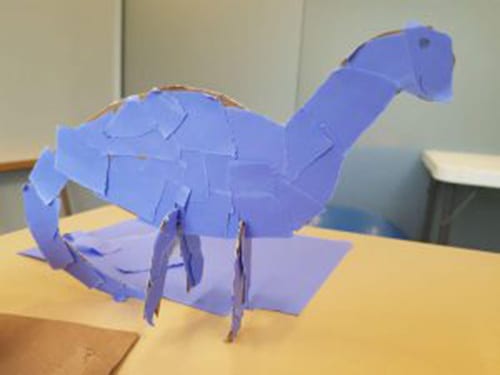
Create a template for your child, drawing it on old cardboard that may be lying around the house. We used cardboard from a toy box we were about to throw away.
If your child is between 2-5 years, we recommend you cut out the dinosaur and let your child decorate the dinosaur. From age 6 upwards, let your child try to cut out part of the dinosaur, the curves and corner may be a bit difficult and they may need your help.
You can also decorate your dinosaur with paint, crayons or other materials, you may want to glue on. You can create any animal you would like using cardboard, use your creativity and follow your child’s interests.
Fine Motor Skills Benefits: Cutting cardboard helps your child build their hand strength and fine motor skills. To decorate the dinosaur, work on their fine motor skills by ripping paper into small pieces and glue it on to cover the whole dinosaur.
Crocodile Creation
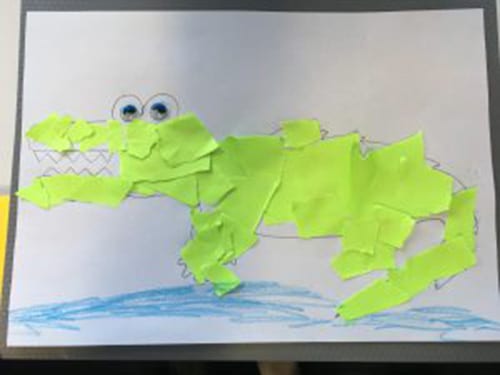
Draw a picture (or print out a template) for your child to then use to explore different materials.
Here we have an example of a crocodile template, one of our clients’ favourite animals! The child worked on their fine motor skills, ripping paper into small pieces to fit in the body, legs and tail. They also practiced holding their glue stick using a tripod grip.
Fine Motor Skills Benefits: To develop their hand strength and finger isolation, get your child to squeeze out paint or glitter glue, spreading the material with their ‘Peter Pointer’ (index) finger.
You could also use crepe paper, scrunching the paper with their fingers and gluing on to their picture.
Creating Using Shapes
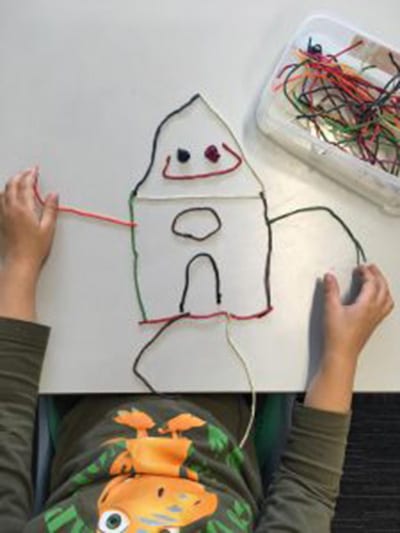
Using shapes to create pictures is a great way to explore your child’s creativity. Here, a child is learning how creating a triangle and square with Wikki Stix can make a house. Making a house allowed him to explore his imagination and turn it into his own picture!
After creating pictures with Wikki Stix, Paddle Pop sticks and Play-Doh, why not get out some paper and copy our picture! it’s a great way for them to learn how to create shapes through a range of different materials.
Jaws Step-by-Step Craft
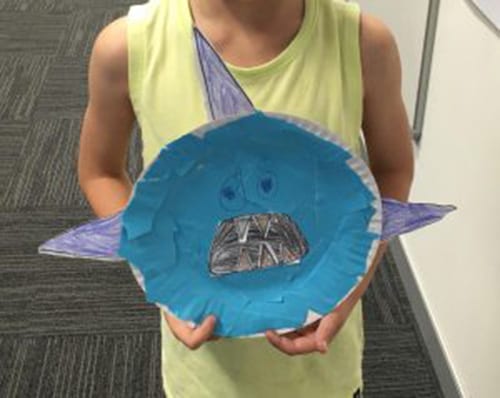
There are lots of different steps involved in creating craft. Working through sequential steps helps your child develop their motor planning – working through their ideas, planning their steps and executing their actions.
Here is an example of a step-by-step shark craft, using a range of skills to complete the steps:
- Start by ripping paper into small pieces and cover the whole paper plate.
- Next cut the template of the mouth, fins and teeth, allowing them to practice cutting a range of unusual shapes.
- Colour in the template shapes with any colour they desire, using thicker pencils or crayons for ages 2-5 years old. Allow your child to explore their own imagination and add their own details to the creation.
If your child is only ready for a smaller step-by-step craft, like a small car, you can help them by cutting out the shapes. They can learn to understand the sequence of colouring and gluing first and build up to crafts with more cutting and extra steps.
Fine motor skills are important for children’s development and activities at school and home — from handwriting to using cutlery — so the more they can be built using fun activities, the better. If you are concerned about your child’s fine motor skills, or perhaps they’re disinterested in picking up a pencil or engaging in craft, you can talk to our team of Occupational Therapists about we can help your child.

